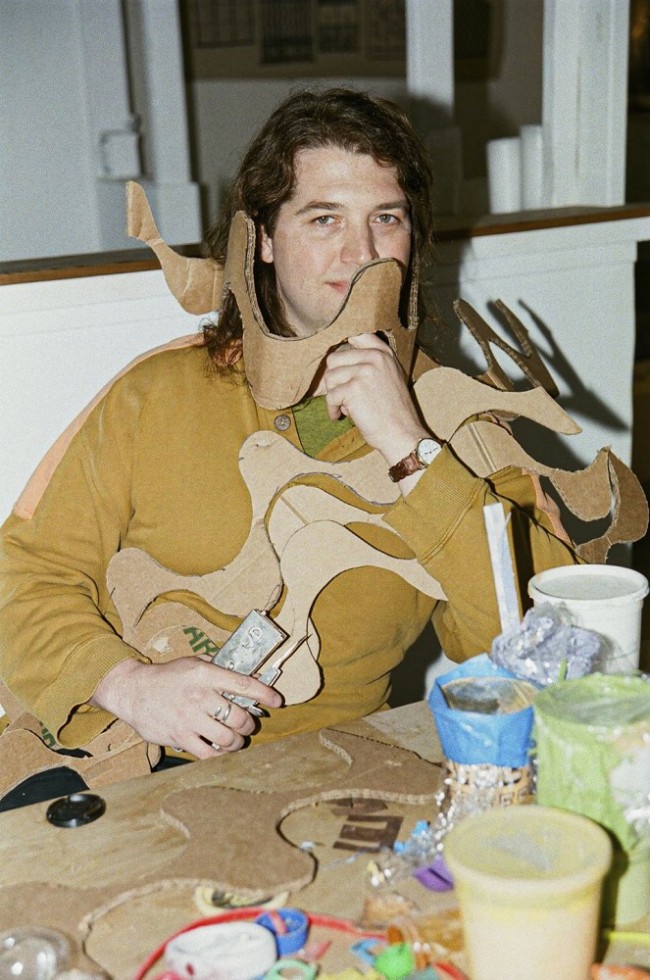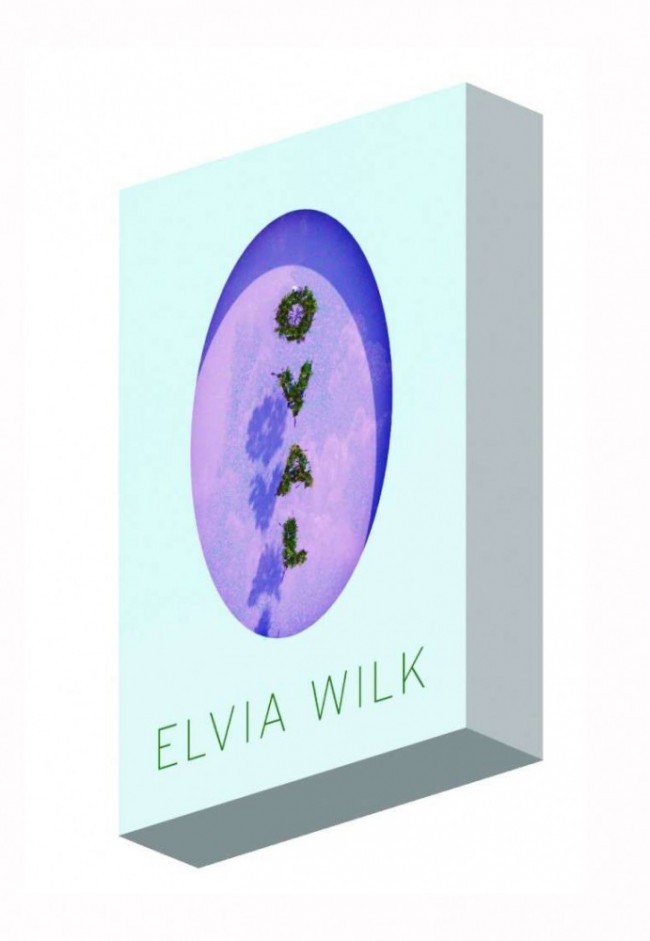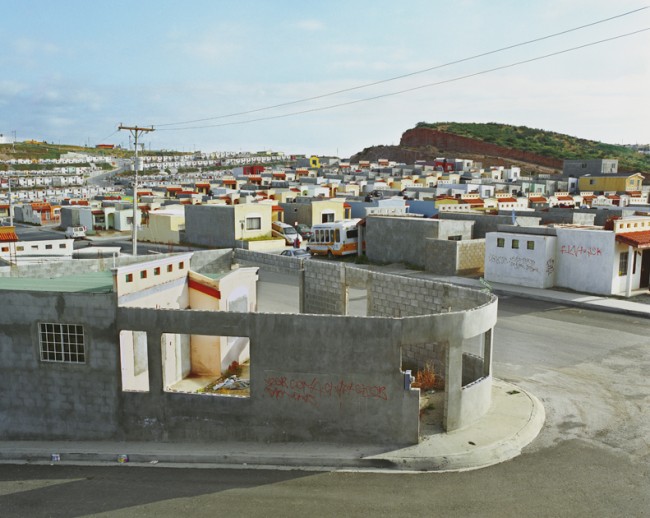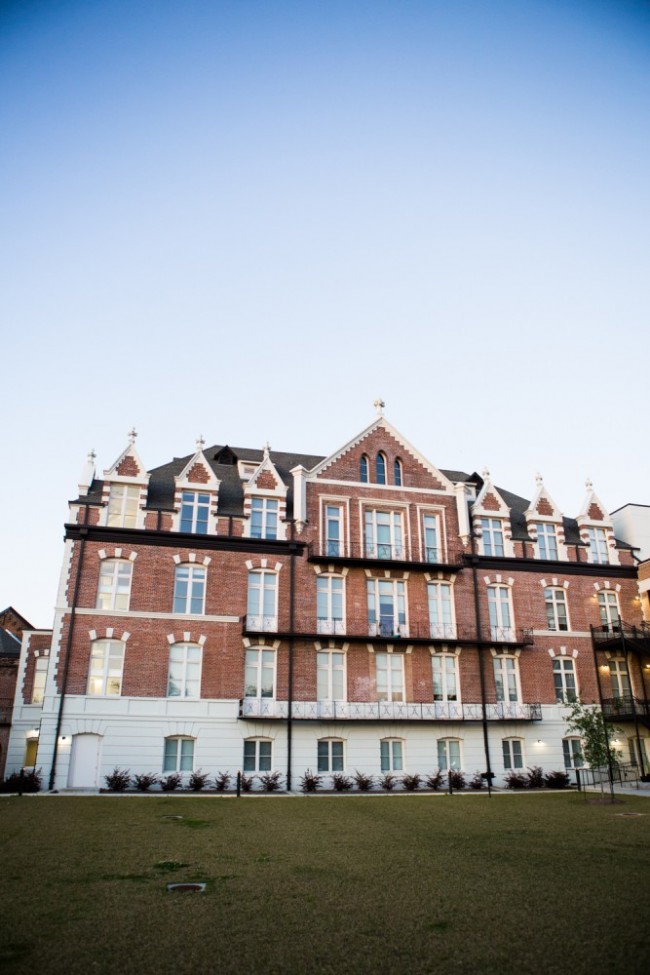STACKED UP: LOT-EK’s New Container Housing In Johannesburg
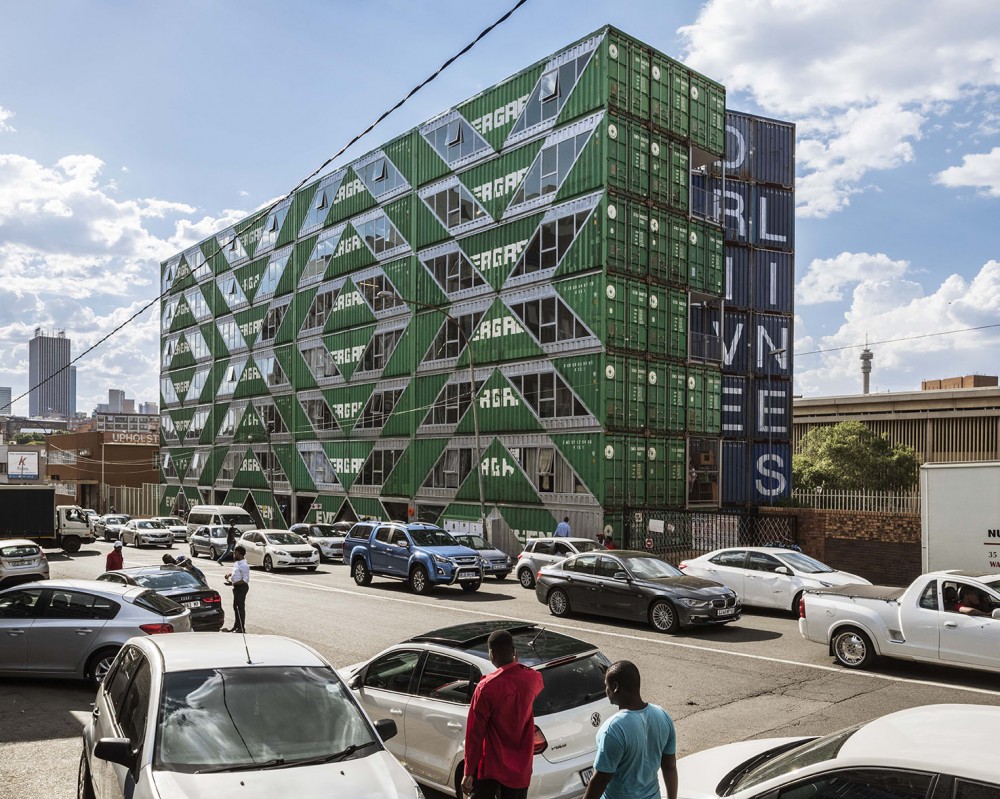
The seven-story apartment building in the Maboneng Precinct.
When Drivelines, a seven-story apartment building, opened in Johannesburg’s Maboneng Precinct in September 2017, its blue-and-green mass of 140 piled-up shipping containers constituted a new architectural landmark for the South African metropolis. The architects of this construction feat were of course LOT-EK, the New York- and Naples-based firm that has made building with shipping containers its trademark mission. Ada Tolla and Giuseppe Lignano, who founded LOT-EK 25 years ago, are now past masters in reusing containers that would otherwise be neglected in shipyards. But even for this seasoned duo, the challenge of turning 40-foot corrugated-steel structures into 104 affordable apartment units and three retail spaces was a first. “In the past, we’d cut and partially or totally prefabricate the containers on another site, and then install them,” Tolla explains. “But this project was too big and would have required two sites and double the labor.” Containers were therefore piled up and cut in situ, making the process more efficient.
-
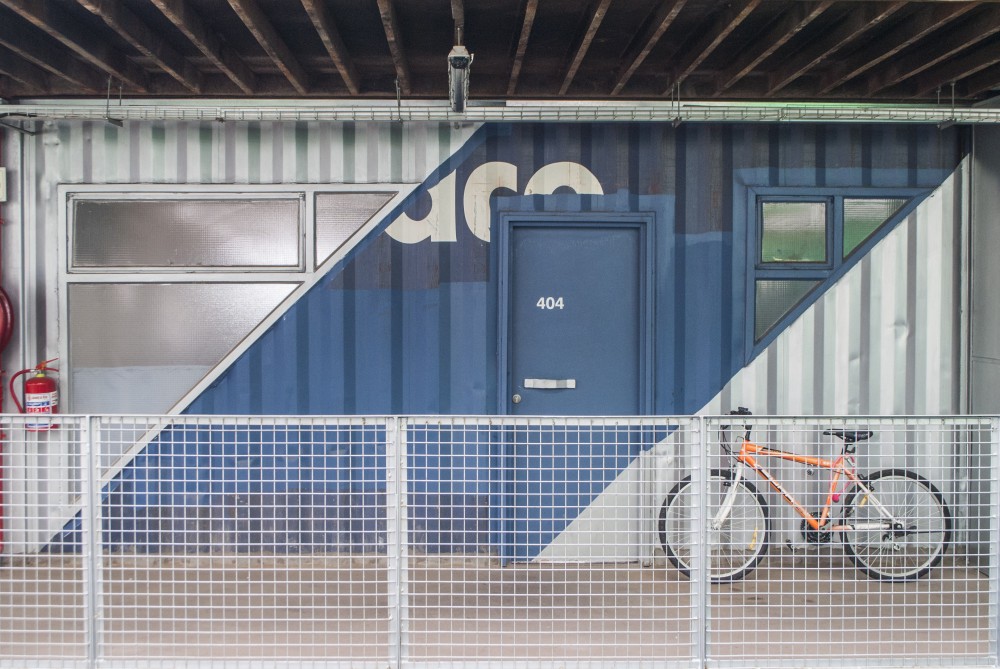
Entrance to an apartment at Drivelines.
-
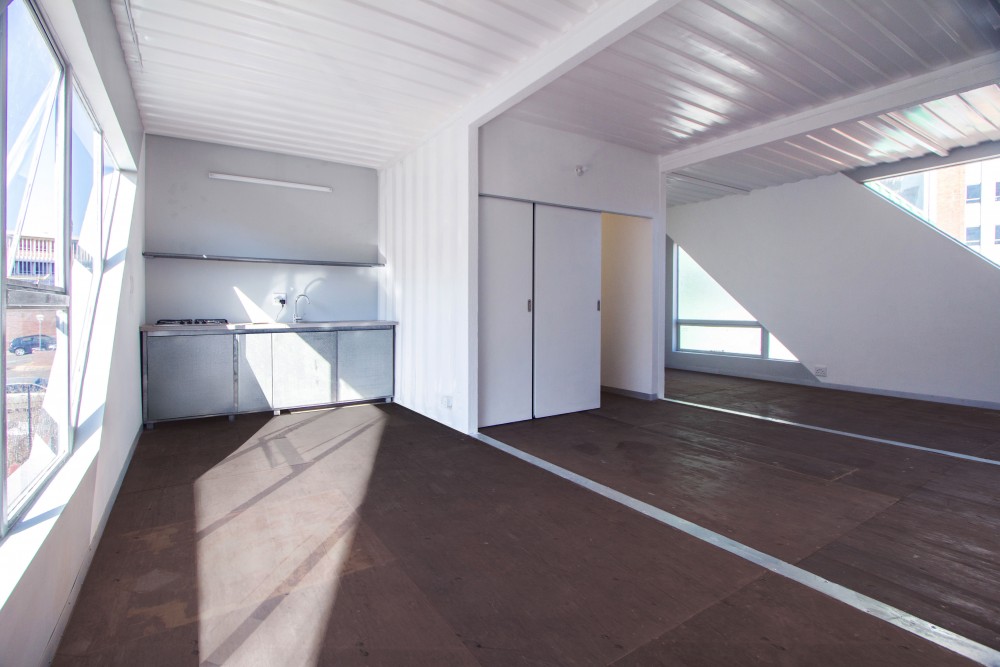
Interior view of an apartment.
-
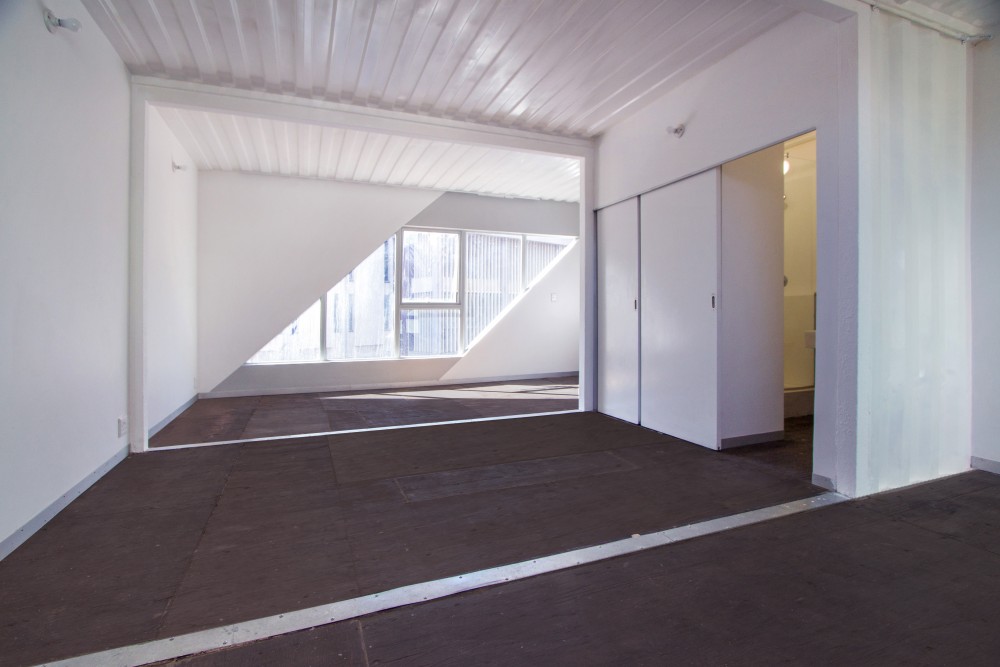
Interior view of an apartment.
-
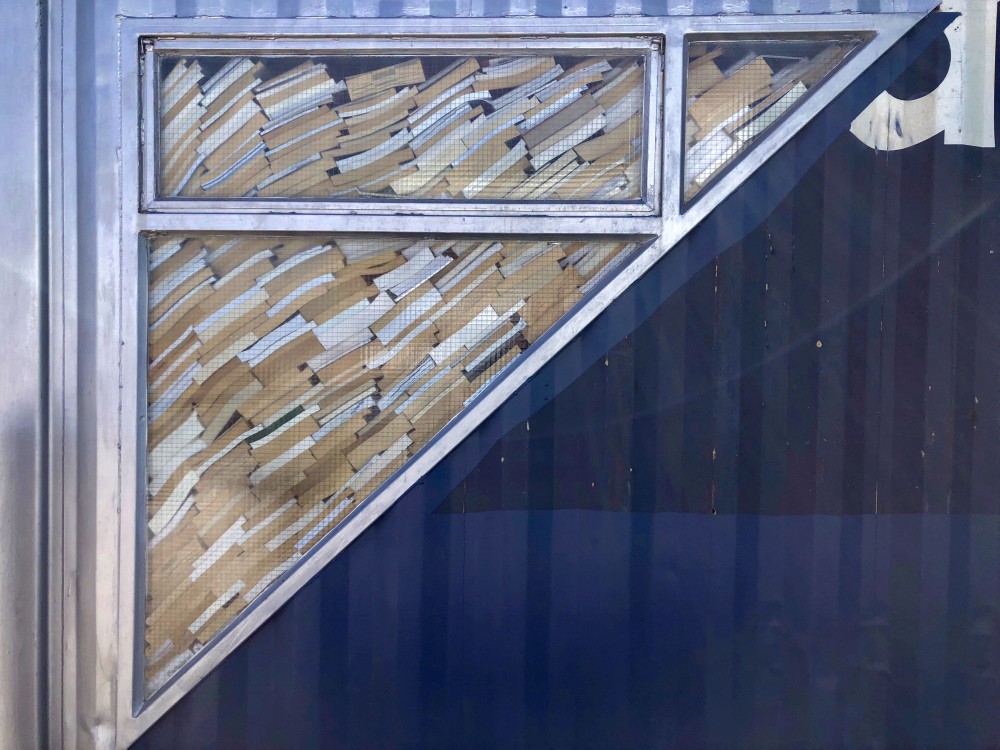
Detail of a window.
Drivelines (named after the car-repair shop that used to stand on the property) introduces low-cost residential options to an area already housing hip restaurants, bars, and the popular weekly Market on Main. “We loved the idea of being part of the change in this city,” Tolla enthuses. The building was complex, she says, because of its wedge-shaped plot of land which informed the hinge-like V plan of the two wings, which in turn resulted in a central courtyard with a swimming pool for residents. “The building is on a busy road, so this (triangle) created an inner space that’s protected, safe, and open. Maboneng is an opportunity for people to re-engage with the city, so we didn’t want the building to be completely closed,” Tolla explains with respect to the open end of the V that looks out onto Johannesburg. “When you’re in there it feels protected but it doesn’t feel like you’re walled in. The city is all around you, and you see it all the time.” The views out of the structure are augmented by large windows — diagonal insets cut into the containers, creating a graphic exterior of diamonds and Xs. “We worked with the diagonal rather than the perpendicular,” she explains of the two slanted glass forms that were replicated multiple times. The pattern is mimicked on the opposite end of each container, allowing sunlight and fresh air to stream into every apartment from both ends. “You have natural light for most of the day and don’t need air-conditioning.”
-
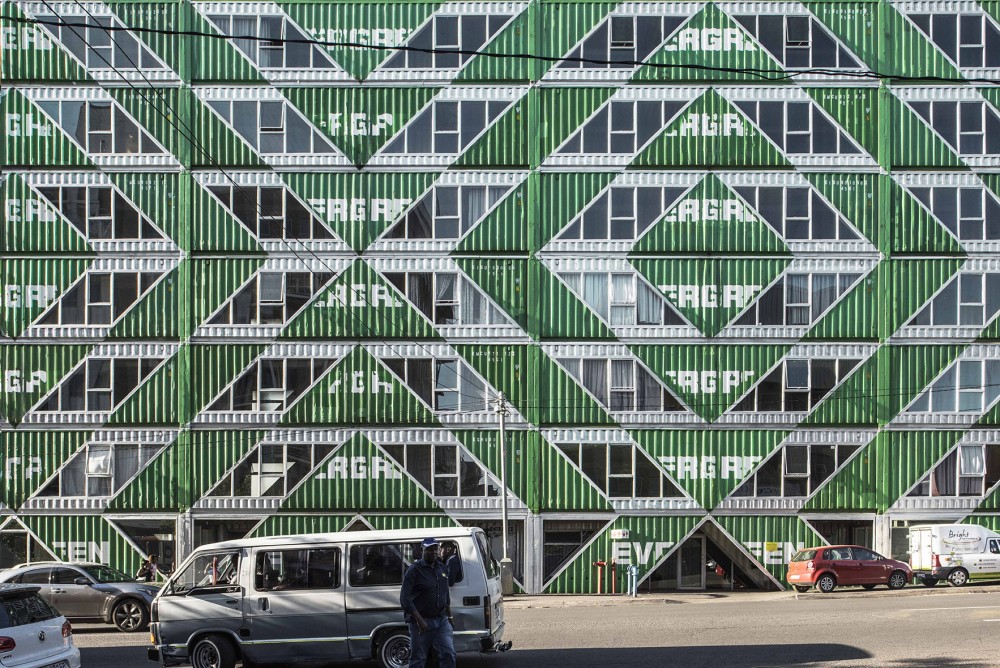
The apartment building, opened in Johannesburg’s Maboneng Precinct in September 2017.
-
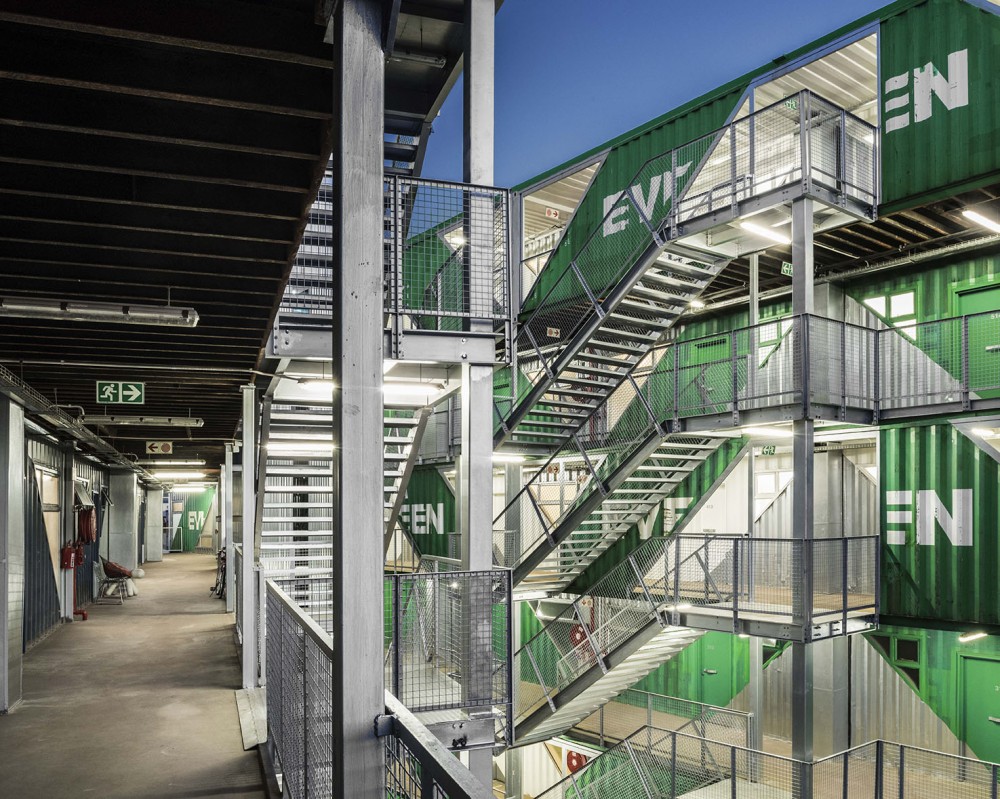
LOT-EK designed an open courtyard that joins the two buildings in a V shape.
-
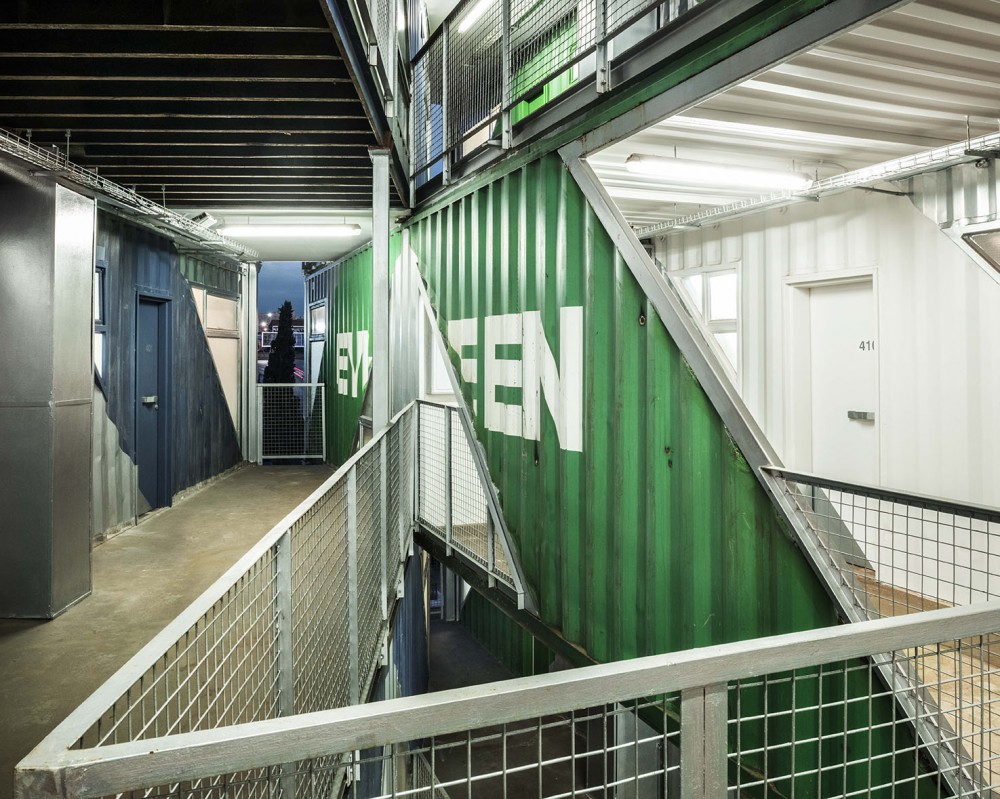
The two interconnected buildings in blue and green.
-
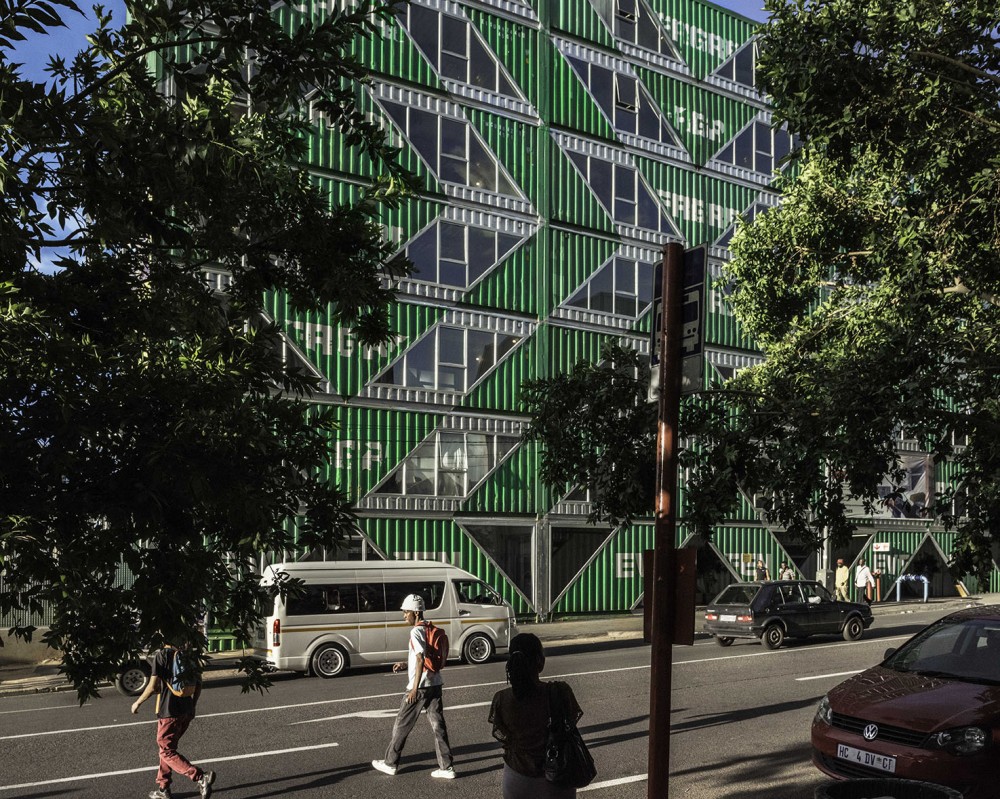
View of the Drivelines building from the street.
-
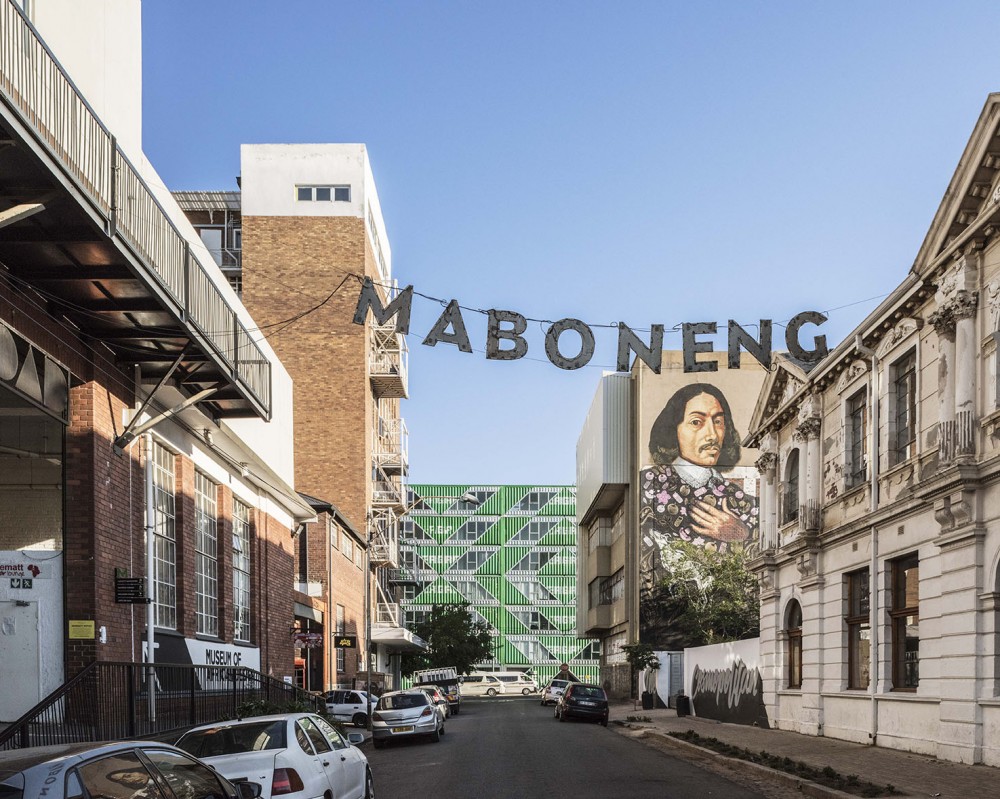
View of the LOT-EK-designed building in the historic Maboneng district.
Where external finish is concerned, one of Drivelines’ wings is green, the other blue — the most widely available colors in Johannesburg’s dry port, apparently. Embracing the language of containers, each wing comprises many iterations of its hue. “There’s newer blue, older blue, beat-up blue, discolored blue… It’s exciting to work with these nuances because currently in architecture everything is glossy and very perfect. Our take has always been much more layered,” Tolla continues. “We wanted to show the life these containers had prior to our intervention. We’re like archaeologists — we’re letting them speak.” They also didn’t want the building to be pretty, but instead “strong, to be tied to what the city is. Johannesburg is a tough, intense city — a lot like Naples, where we come from. So it spoke to us, from day one, about complexity, contrast, and tension. We were immediately taken by it.”
-
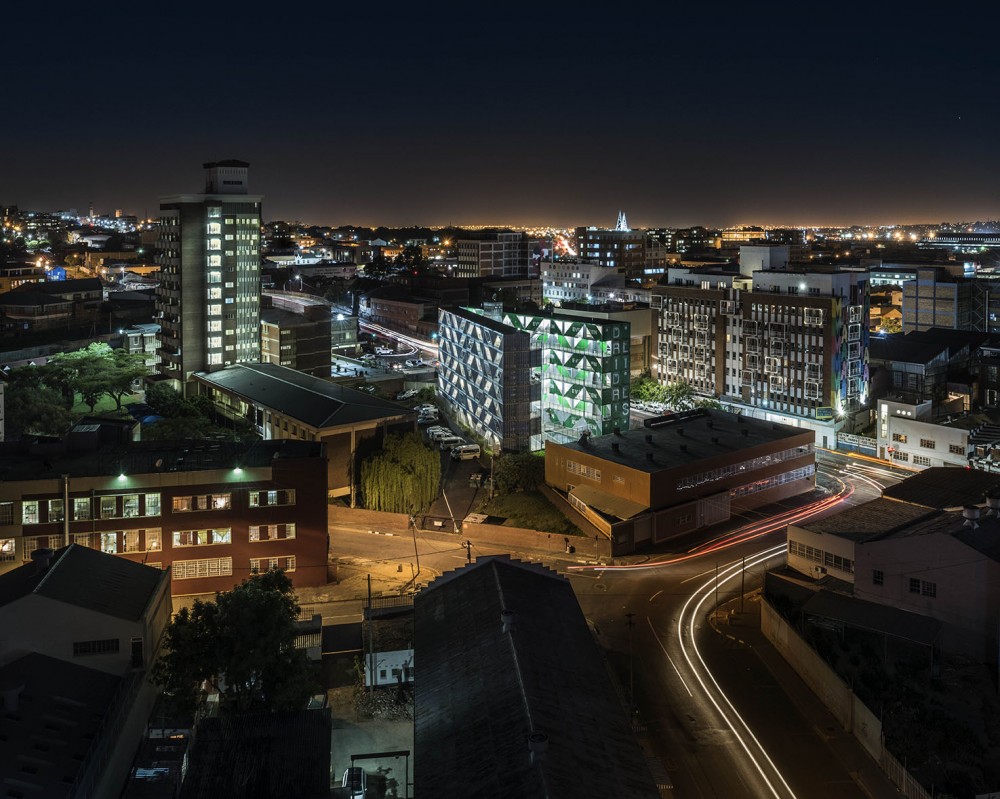
The Johannesburg skyline at night.
-
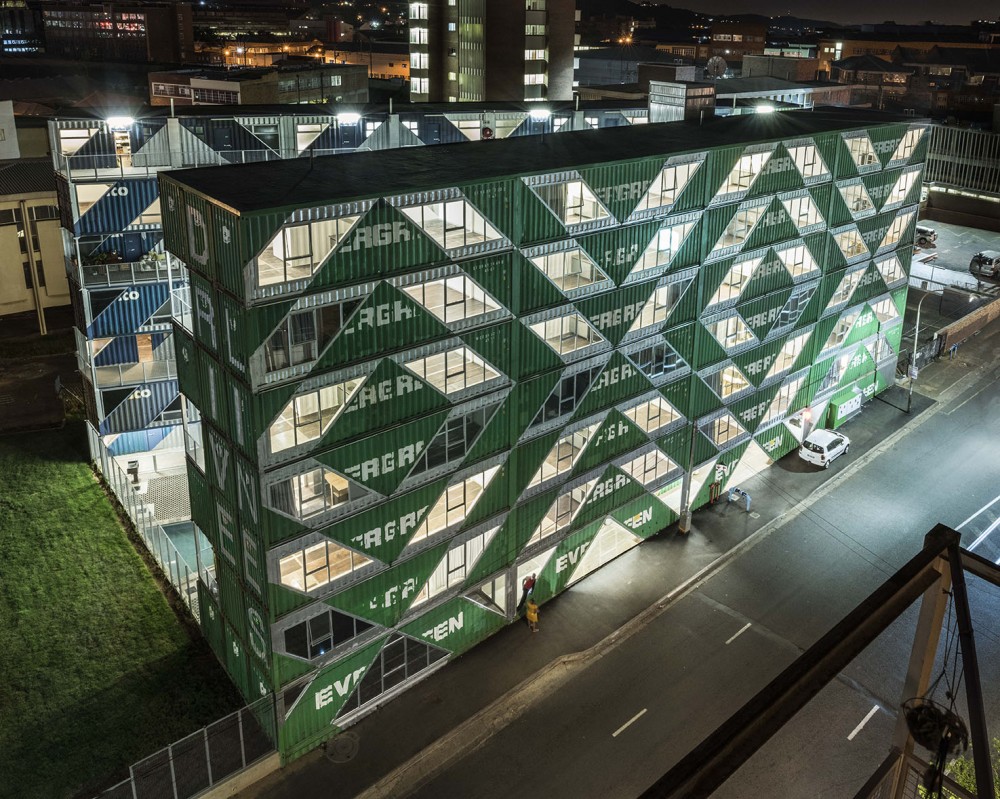
The V-shaped complex designed by LOT-EK.
-
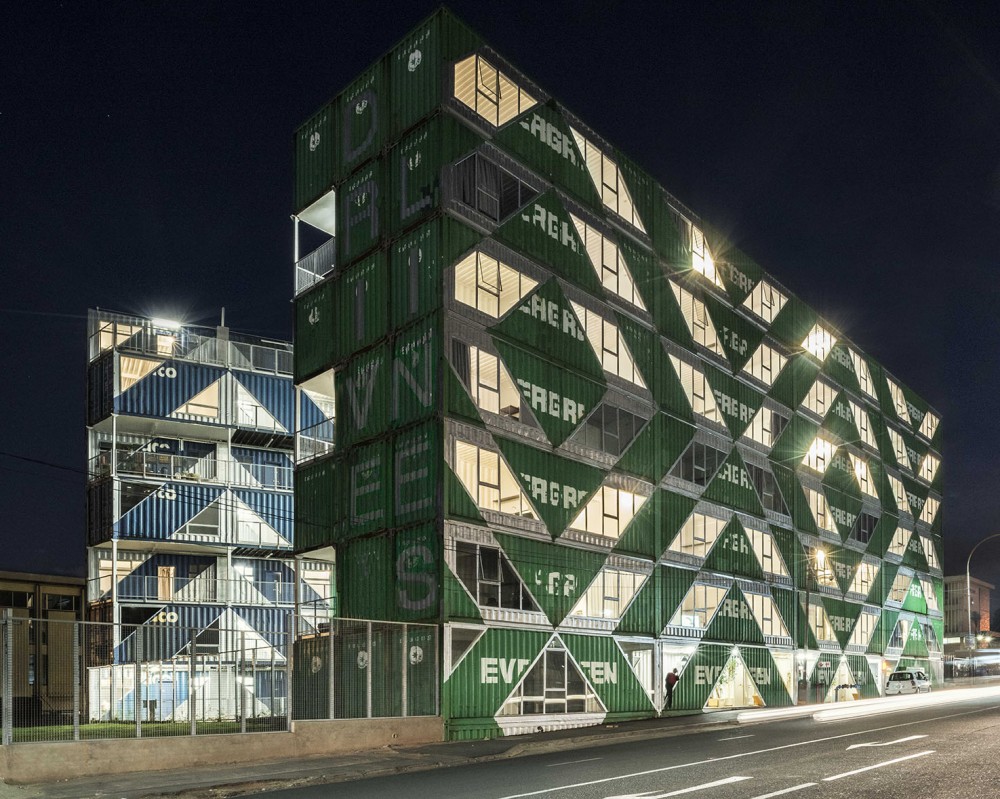
Seven floors of stacked shipping containers make up the two connected buildings.
-
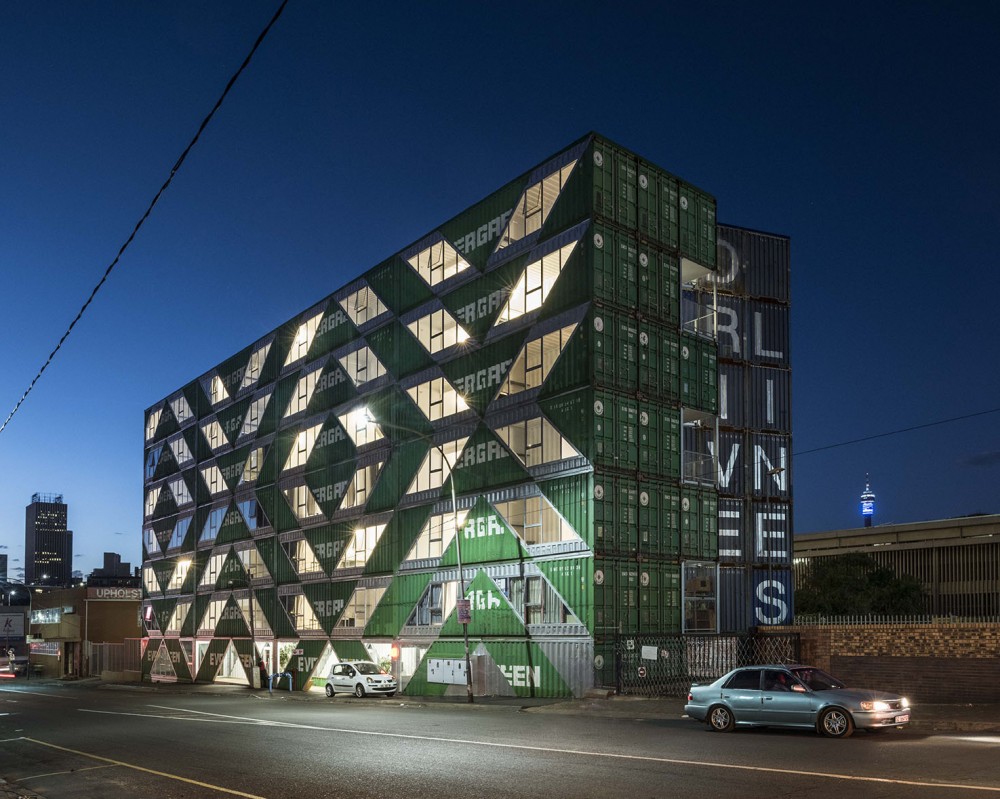
View of Drivelines at night.
Tolla and Lignano were invited to South Africa by Jonathan Liebmann, the man responsible for turning Maboneng into a mixed-use urban hub over the past ten years. “Johannesburg used to be a city that was not only segregated but walled up and protected,” recalls Tolla. “Maboneng tests a different way of thinking about the city, targeting a post-apartheid generation that is more mixed.” Zamathuli Nkomo, a 40-year old resident who lives in one of Drivelines’ corner studios, agrees. “It’s the people that make Maboneng a great place to live,” she explains, “the mixed cultures that create a community. People can really be whoever they want to be here.” She says she enjoys sitting out on the open-air passageway, looking down at the pool area, feeling a sense of pride to live in what she calls “the monument of Maboneng.” She and fellow tenants even formed a WhatsApp group that they use as an information platform. “We are like old-time neighbors looking out for one another,” she smiles.
In many ways Drivelines epitomizes the reason LOT-EK is drawn to the architectural upcycling of shipping containers. “They contain all the ambition of globalization, of being connected,” Tolla muses, reflecting not only on their previous role in the global flow of goods and capital, but also on the families, students, and professionals living in the building who connect with one another daily. “This adds another layer to the architecture: the human layer of inhabitation. This is the real life of the building.”
Text by Tracy Lynn Chemaly.
All images by Dave Southwood for
LOT-EK.

